Your First Pixel-Art
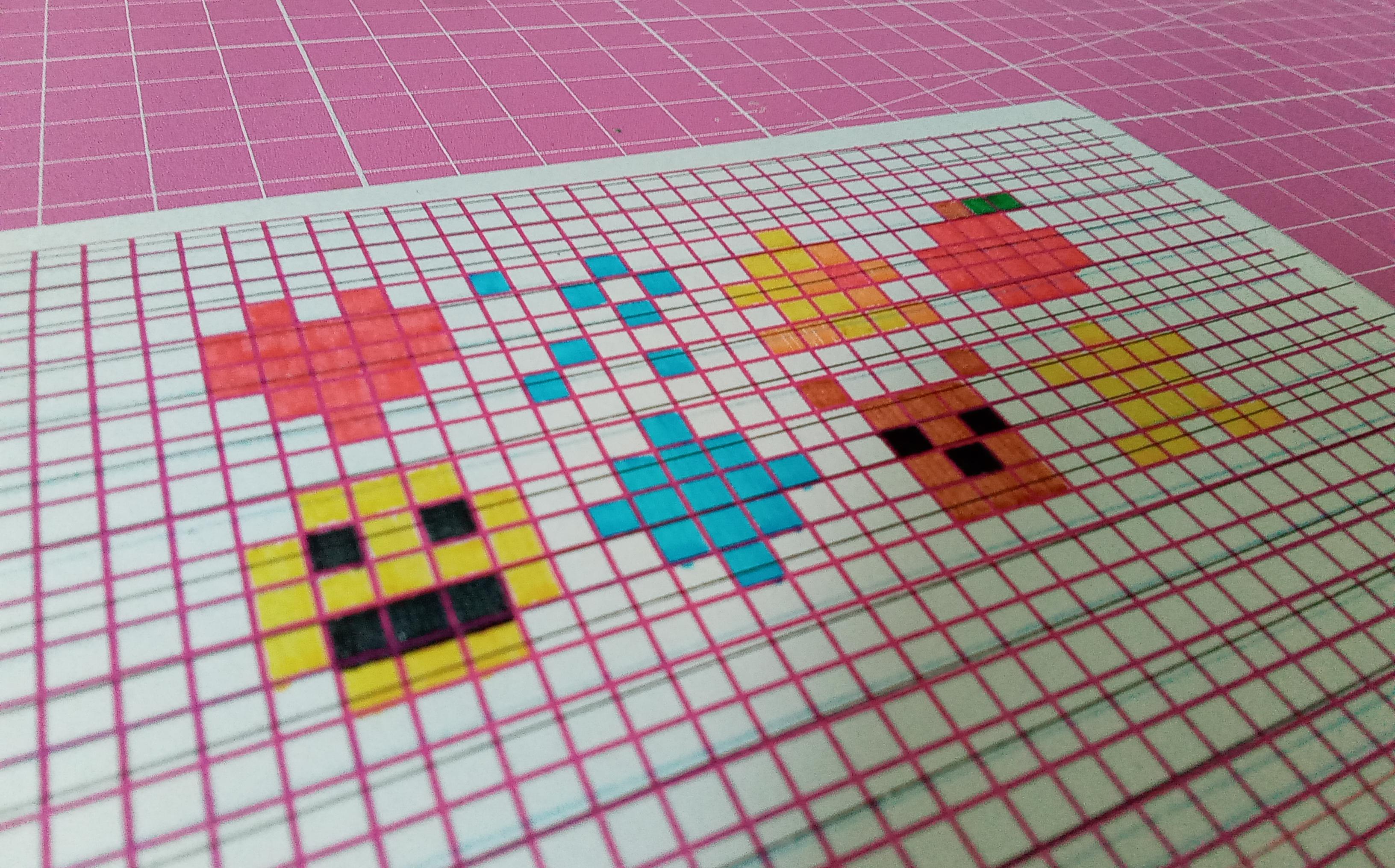
Hi, my name is Robbi Robot and today we are going to deal with art, more precisely pixel-art. For this we will learn to understand the basics.
With most tutorials there is the problem that the author usually already has a very large and professional knowledge. This makes most people who write tutorials then unfortunately forget how to start from scratch, so that anyone interested can find a good start.
In this pixel-art tutorial we will start from scratch today, so the following text is also suitable for children and people who have never had anything to do with pixel-art before.
With most tutorials there is the problem that the author usually already has a very large and professional knowledge. This makes most people who write tutorials then unfortunately forget how to start from scratch, so that anyone interested can find a good start.
In this pixel-art tutorial we will start from scratch today, so the following text is also suitable for children and people who have never had anything to do with pixel-art before.
Materials
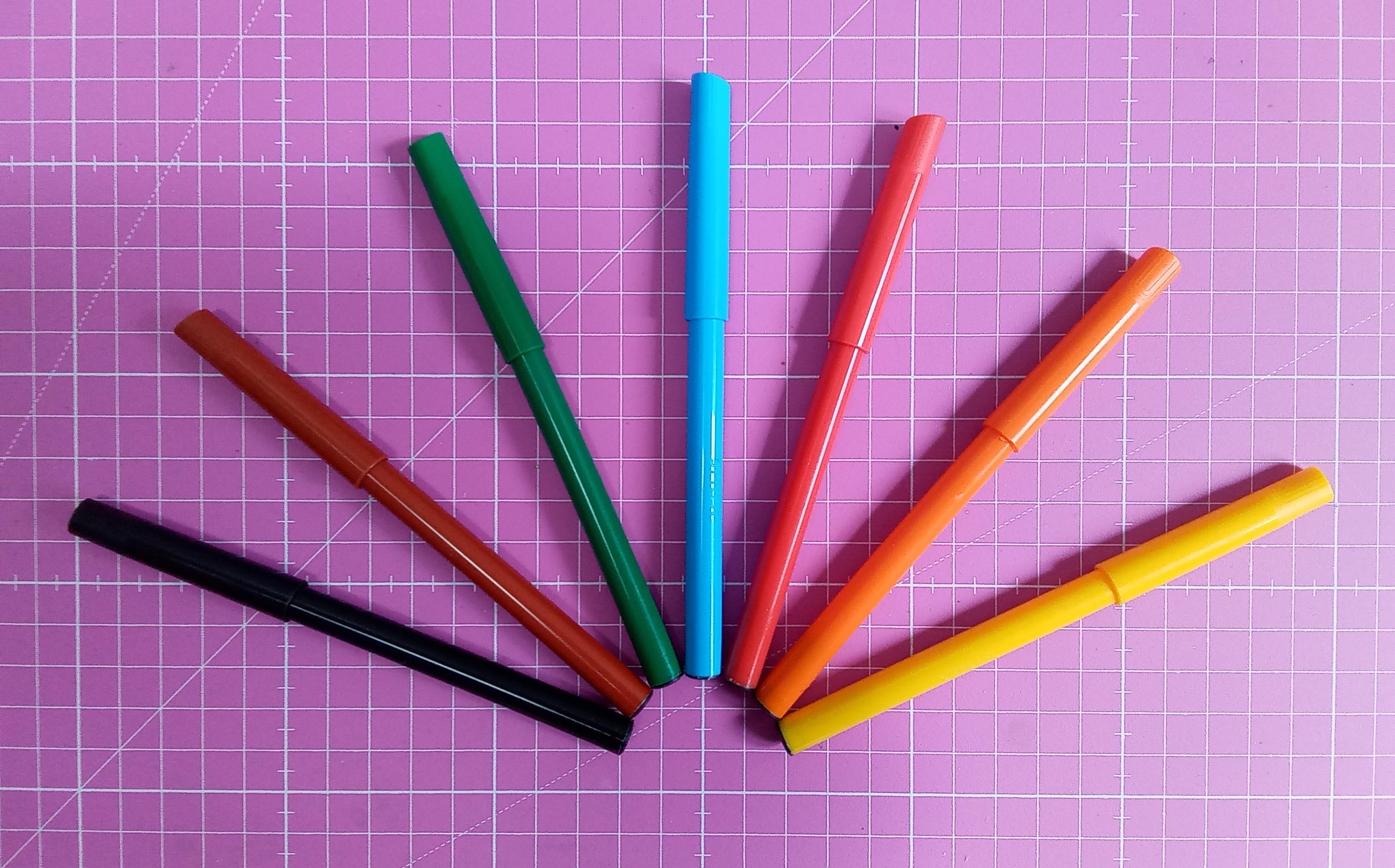
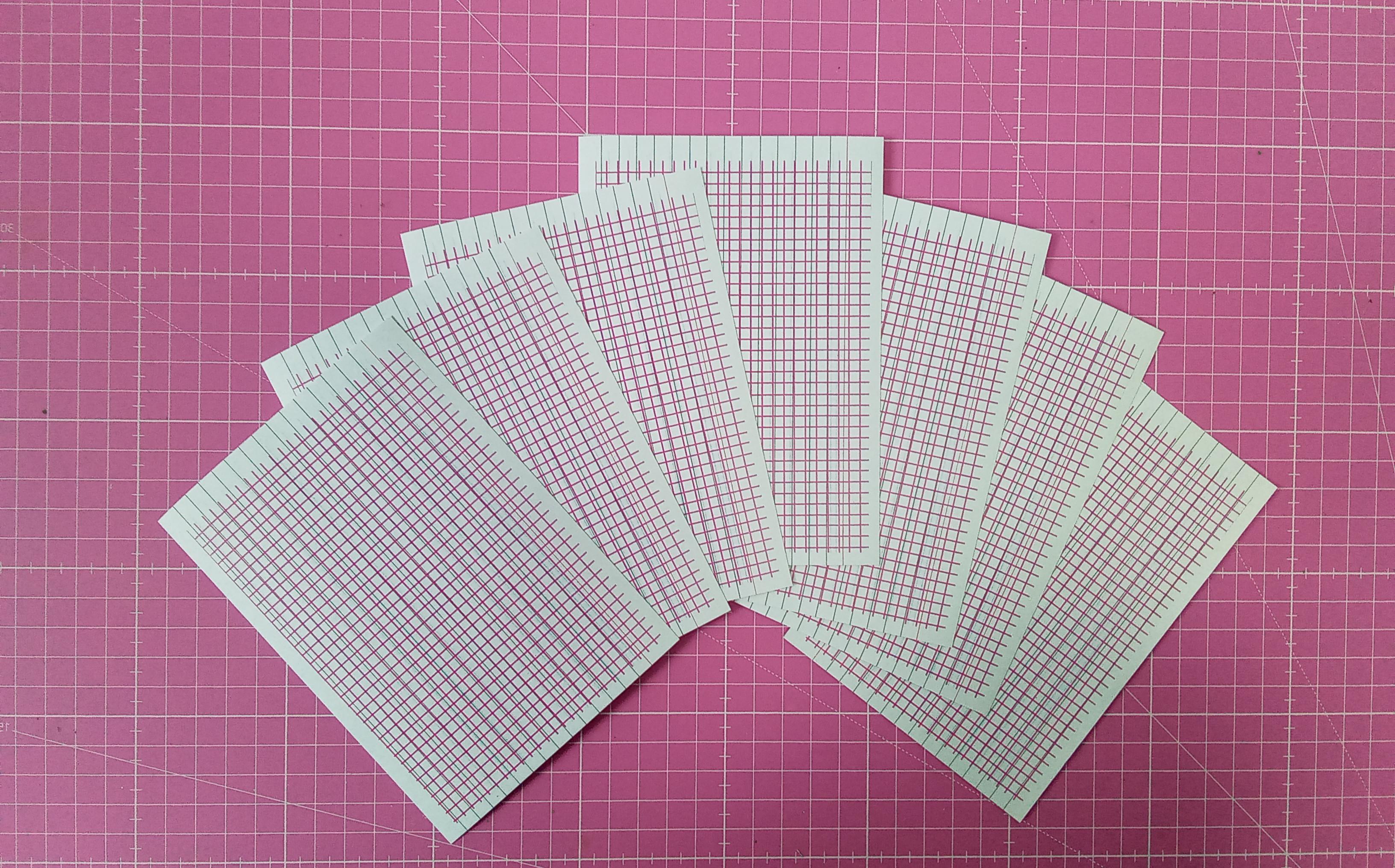
We will not need many materials to learn how to create pixel-art. Just a few markers and graph paper. You will have both at the latest when you go to school. These materials are not that expensive and can be bought at a dollar store.
+ colerfull pens
+ graph paper
The colored pencils do not have to have exactly the same colors as in the photos and if you are missing a blue pencil, for example, you can also take another color. I use here only certain colors so that the sense of each pixel type is better understood. The great thing about pixel-art is that you decide what you like. Your creativity and inspiration is the most beautiful thing about this kind of art.
I decided on a few basic colors for the pens that I want to use.
+ Black ⬛
+ Brown 🟫
+ Green 🟩
+ Blue 🟦
+ Red 🟥
+ Orange 🟧
+ Yellow 🟨
+ colerfull pens
+ graph paper
The colored pencils do not have to have exactly the same colors as in the photos and if you are missing a blue pencil, for example, you can also take another color. I use here only certain colors so that the sense of each pixel type is better understood. The great thing about pixel-art is that you decide what you like. Your creativity and inspiration is the most beautiful thing about this kind of art.
I decided on a few basic colors for the pens that I want to use.
+ Black ⬛
+ Brown 🟫
+ Green 🟩
+ Blue 🟦
+ Red 🟥
+ Orange 🟧
+ Yellow 🟨
Preparations
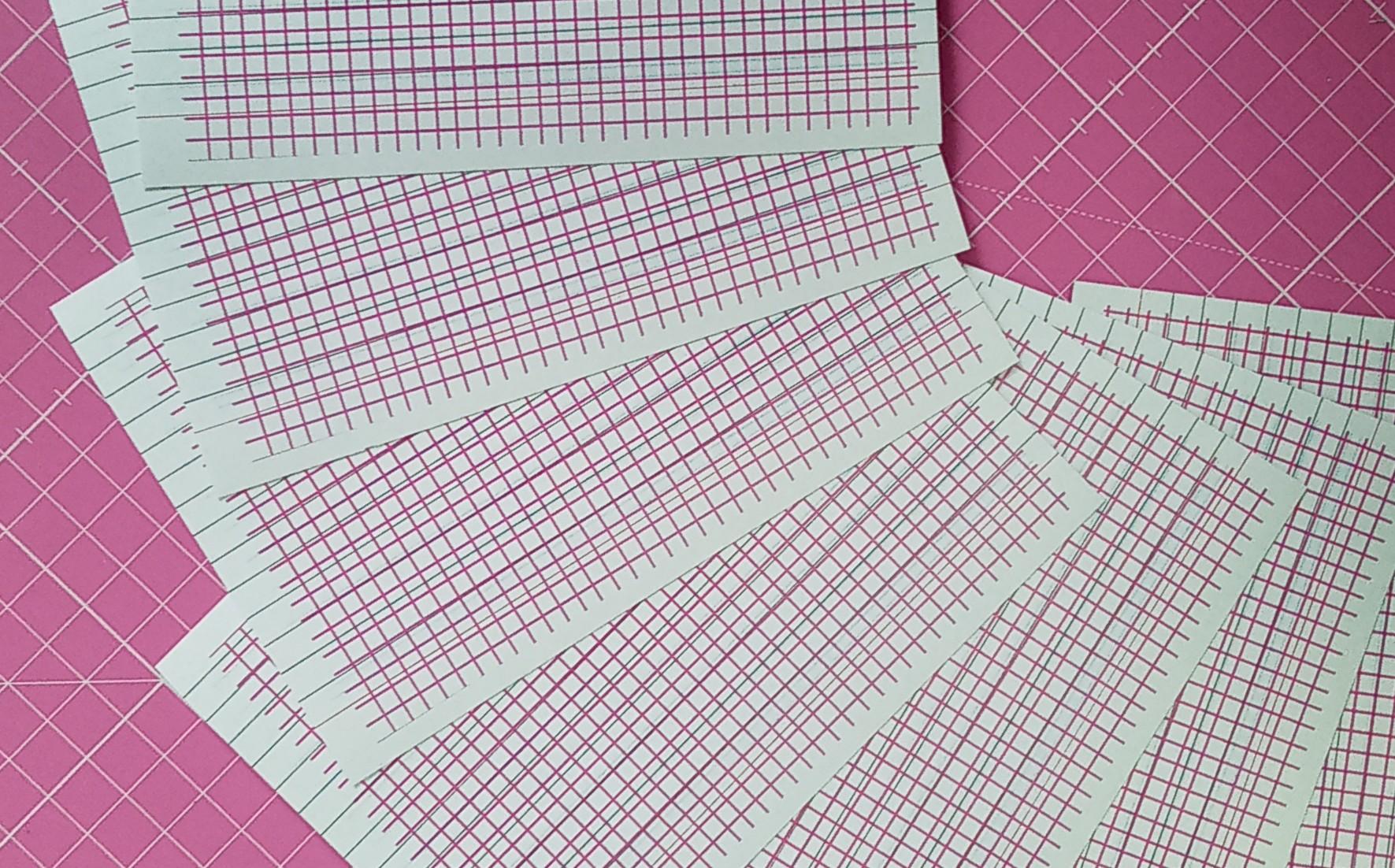
Before we start with our art project we will learn a little bit of theoretical knowledge about this art form. What is pixel-art? This question is quite simple to answer. Pixel-art are rectangular pixels that represent something. This can be anything. Font, images or even icons. For example the mouse pointer of your computer or graphics in a computer game.
Pixel art was very popular when computers did not have such high resolution. This has changed, of course, because the hardware and software has developed very quickly.
But that's also the great thing about pixel-art. This art form can be learned very easily by people. You don't have to be a designer at Apple or Nintendo to learn pixel art. There are millions of pixel-art artists who do it more or less professionally. If you search the internet for pixel-art you will find a lot of great pictures. But don't be put off by all the pictures. These people have all started from scratch.
Pixel art was very popular when computers did not have such high resolution. This has changed, of course, because the hardware and software has developed very quickly.
But that's also the great thing about pixel-art. This art form can be learned very easily by people. You don't have to be a designer at Apple or Nintendo to learn pixel art. There are millions of pixel-art artists who do it more or less professionally. If you search the internet for pixel-art you will find a lot of great pictures. But don't be put off by all the pictures. These people have all started from scratch.
Sketches
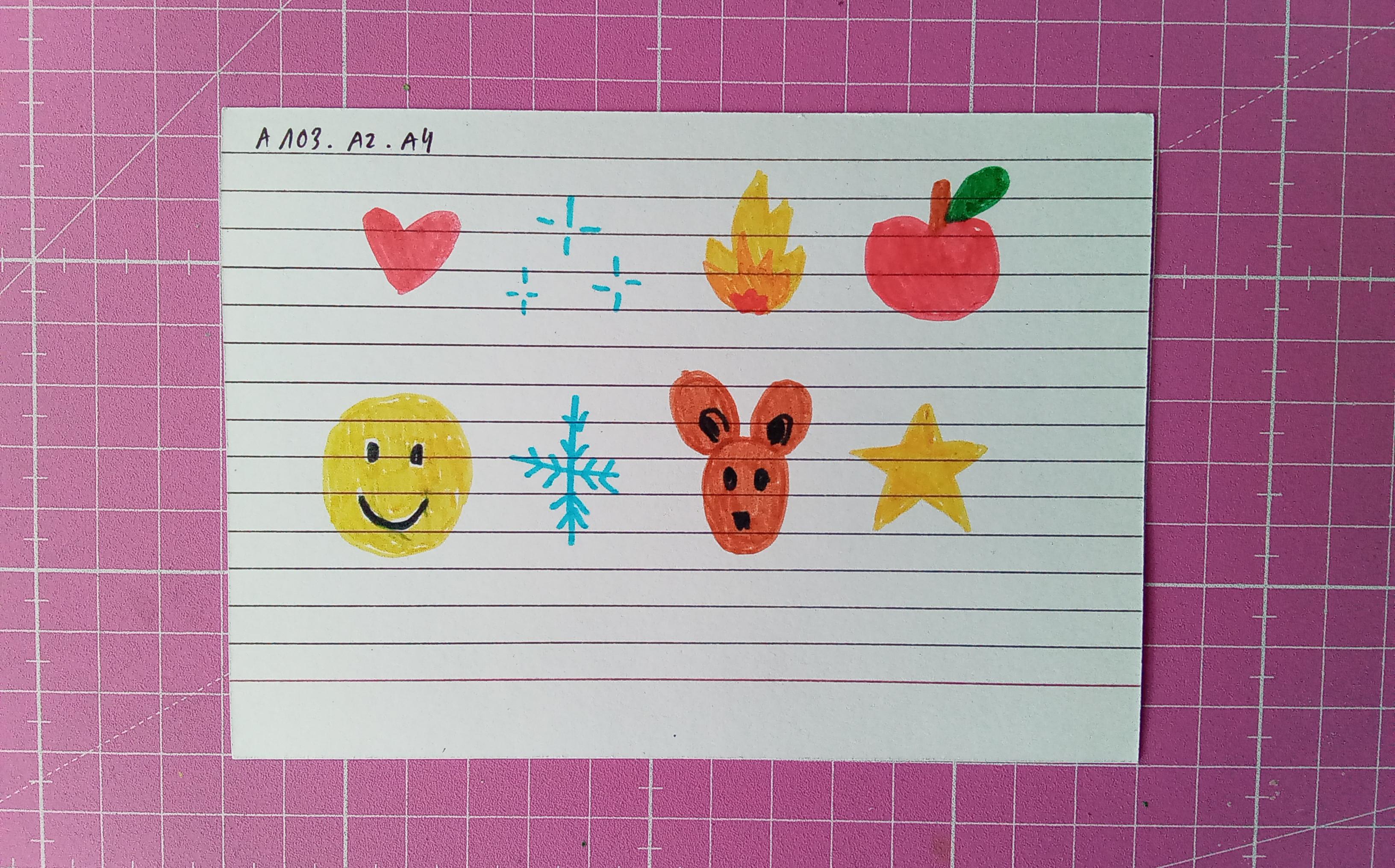
First we make preliminary drawings so we know what we want to draw for pixel-art. To do this, we take the pen and draw a few motifs in advance. There are no limits to your creativity. Maybe you want to design your own emojie or you have discovered an interesting picture in a computer game.
You alone decide what you want to draw. Since I really want to keep this Instructable understandable for everyone, I have chosen motifs that are easy to pixelate. Below this text you'll find a list, which you can use if you can't think of anything spontaneously.
+ Heart ♥️
+ Glitter ✨
+ Fire 🔥
+ Apple 🍎
+ Face 😀
+ Snowflake ❄️
+ Mouse 🐭
+ Star ⭐
It's important that the sketches don't have to be perfect and you don't have to put too much pressure on yourself. These sketches are just ideas to stimulate your brain, to stimulate the creative process of pixel-art. If you don't like a drawing, just try another one.
You alone decide what you want to draw. Since I really want to keep this Instructable understandable for everyone, I have chosen motifs that are easy to pixelate. Below this text you'll find a list, which you can use if you can't think of anything spontaneously.
+ Heart ♥️
+ Glitter ✨
+ Fire 🔥
+ Apple 🍎
+ Face 😀
+ Snowflake ❄️
+ Mouse 🐭
+ Star ⭐
It's important that the sketches don't have to be perfect and you don't have to put too much pressure on yourself. These sketches are just ideas to stimulate your brain, to stimulate the creative process of pixel-art. If you don't like a drawing, just try another one.
Pixel-Art on Paper
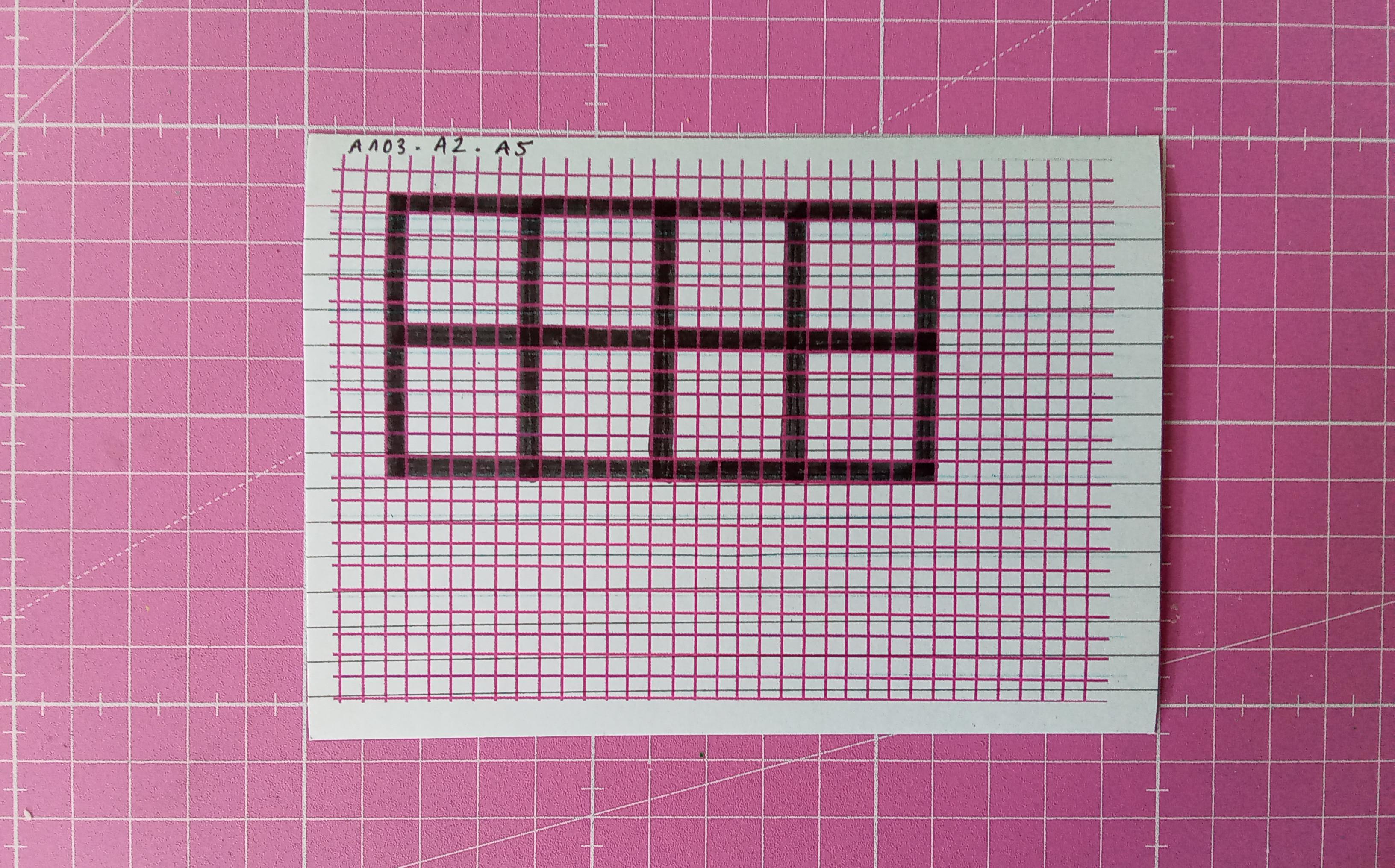
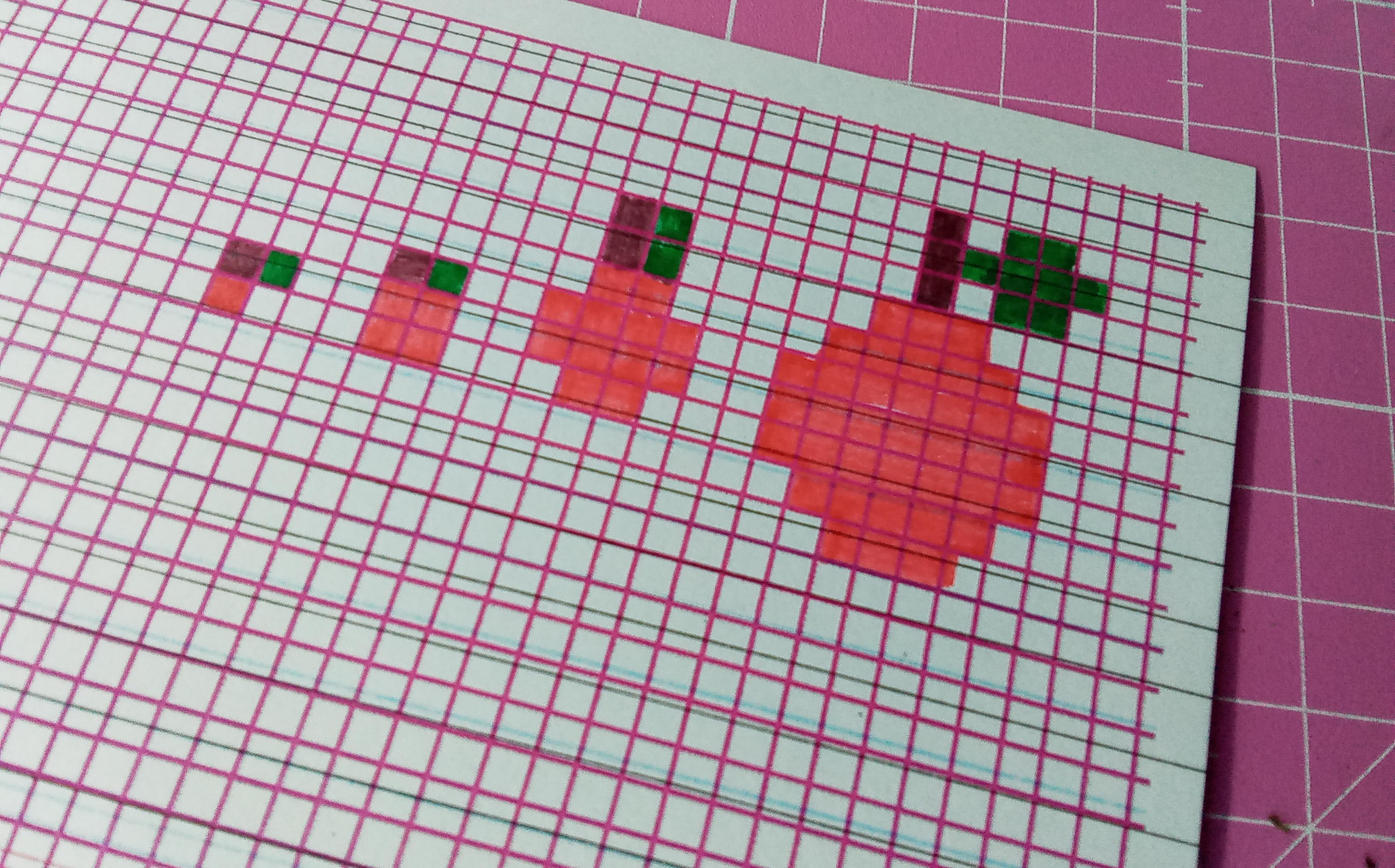
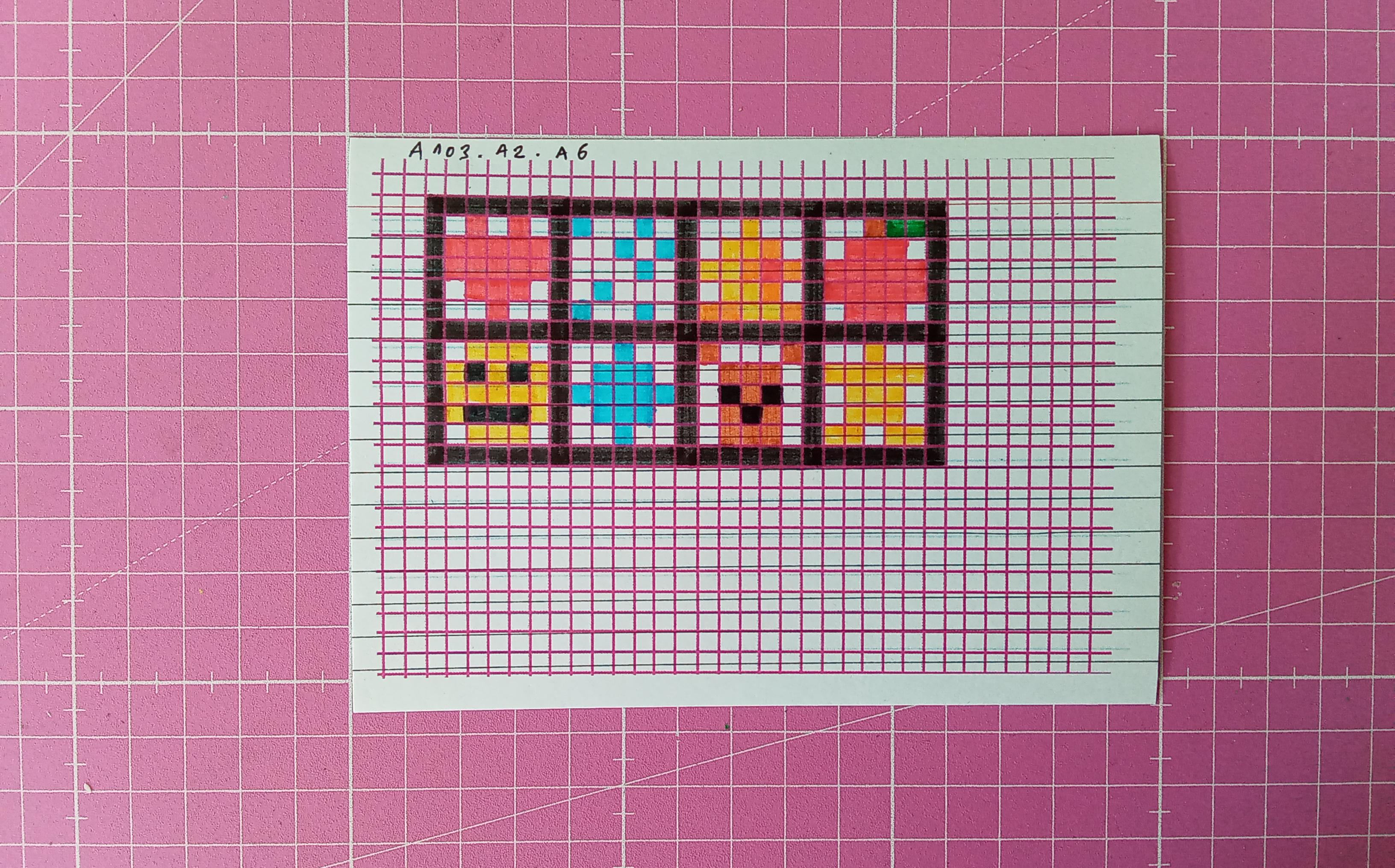
Before computers took over almost all the creative processes of pixel-art artists, every idea was pixelated on paper beforehand. From computer games to the first Apple icons, professional pixel-artists always had a notebook or graph paper pad on their desk.
We will do that too, because it helps us to understand pixel-art better. For this we need to consider in which size we want to design our images. Especially with computer icons there are certain formats you have to stick to, but we won't do that today, but you should pay attention to two points.
A small pixel-art with e.g. 5*5 pixels is more difficult to design than a motif with 16*16 pixels. Why is that? The smaller a picture gets, the less pixels I have that I can use, so the picture becomes more abstract. The more abstract an image becomes, the higher the probability that a viewer sees something different in the motif than I planned. This is not a bad thing, because especially in computer games it can add a whole new dimension to the player experience. But! A larger pixel-art picture also means that we have to draw more and we need longer time. As we can see, both choices have advantages and disadvantages.
I decided to use a motif size of 5*5 pixels.
With this size, our images have a symmetrical format and fit better with the Intructable we are learning together here. When you have gained more experience after a few motifs you can of course change this and you should. Pixel-art lives from experimentation of people who are interested in this art style.
Since we need to get a feel for the technique first, we will draw a subframe. We can then use this as a guide and make fewer mistakes. The actual process is quite simple. We abstract the motif, for example, the apple and transfer this to the paper. How does this work exactly?
We look at the preliminary drawing of the apple 🍎. What colors do we need? Red 🟥, green 🟩 and brown 🟫. Then we look at how the colors are arranged. Red is a big red circle 🔴. Brown and green are just a small line with leafs 🌿above the red circle. Now we put the single pixels into our 5*5 field and try to pixelate our correct drawing. Don't worry if this doesn't work right away, I'm pretty sure you'll learn to understand it. Patience is very important with pixel-art.
We will do that too, because it helps us to understand pixel-art better. For this we need to consider in which size we want to design our images. Especially with computer icons there are certain formats you have to stick to, but we won't do that today, but you should pay attention to two points.
A small pixel-art with e.g. 5*5 pixels is more difficult to design than a motif with 16*16 pixels. Why is that? The smaller a picture gets, the less pixels I have that I can use, so the picture becomes more abstract. The more abstract an image becomes, the higher the probability that a viewer sees something different in the motif than I planned. This is not a bad thing, because especially in computer games it can add a whole new dimension to the player experience. But! A larger pixel-art picture also means that we have to draw more and we need longer time. As we can see, both choices have advantages and disadvantages.
I decided to use a motif size of 5*5 pixels.
With this size, our images have a symmetrical format and fit better with the Intructable we are learning together here. When you have gained more experience after a few motifs you can of course change this and you should. Pixel-art lives from experimentation of people who are interested in this art style.
Since we need to get a feel for the technique first, we will draw a subframe. We can then use this as a guide and make fewer mistakes. The actual process is quite simple. We abstract the motif, for example, the apple and transfer this to the paper. How does this work exactly?
We look at the preliminary drawing of the apple 🍎. What colors do we need? Red 🟥, green 🟩 and brown 🟫. Then we look at how the colors are arranged. Red is a big red circle 🔴. Brown and green are just a small line with leafs 🌿above the red circle. Now we put the single pixels into our 5*5 field and try to pixelate our correct drawing. Don't worry if this doesn't work right away, I'm pretty sure you'll learn to understand it. Patience is very important with pixel-art.
Conclusion
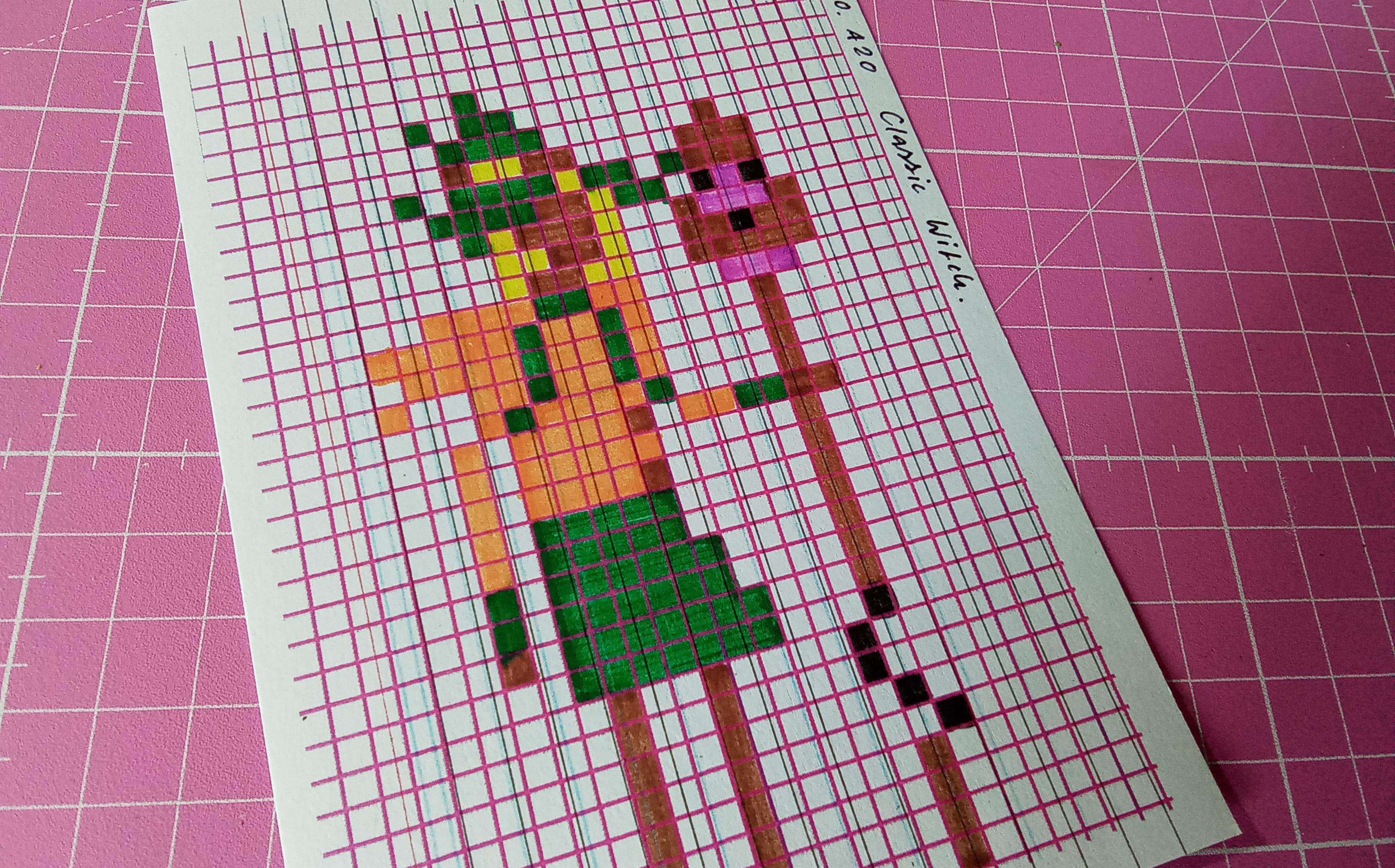
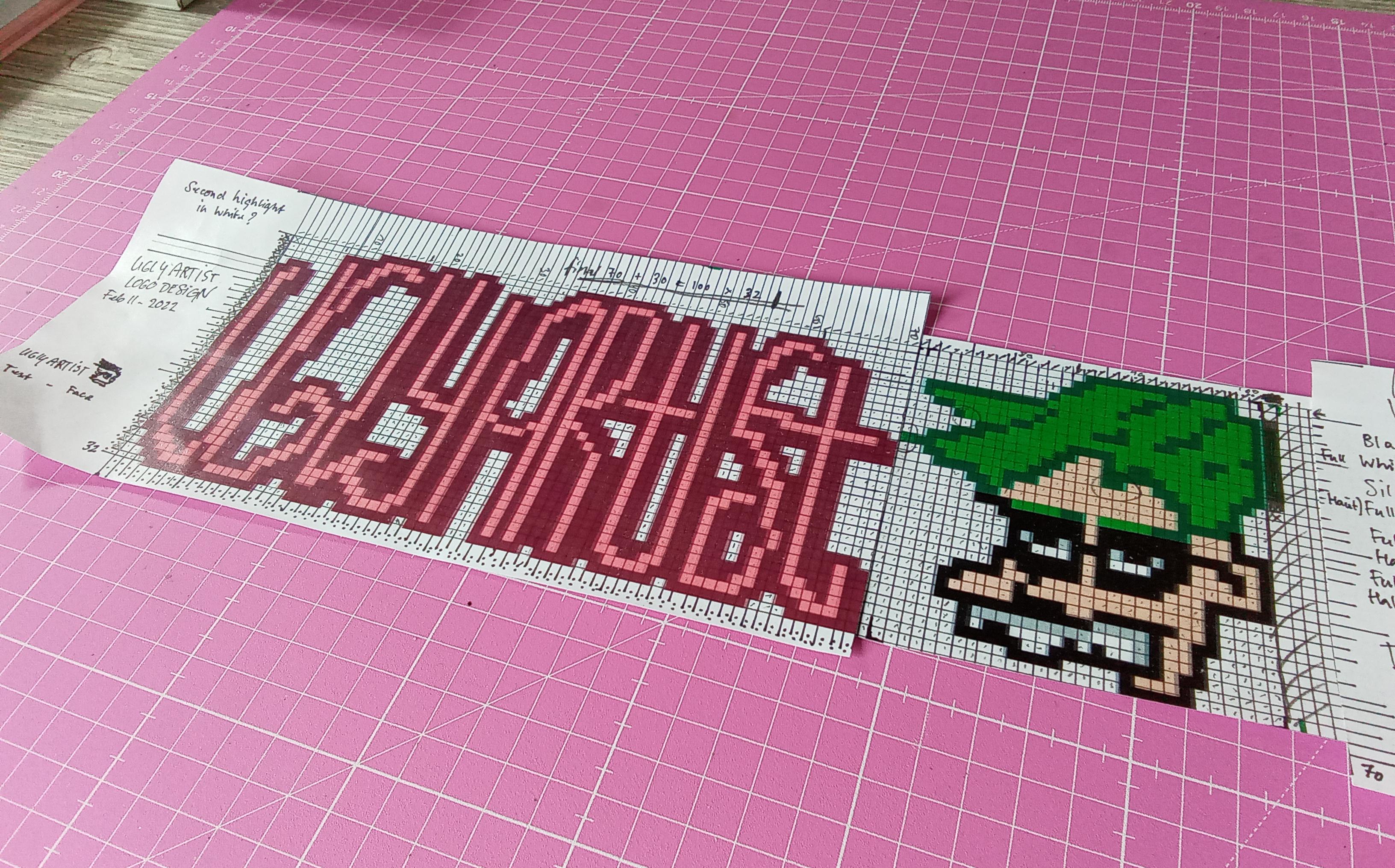
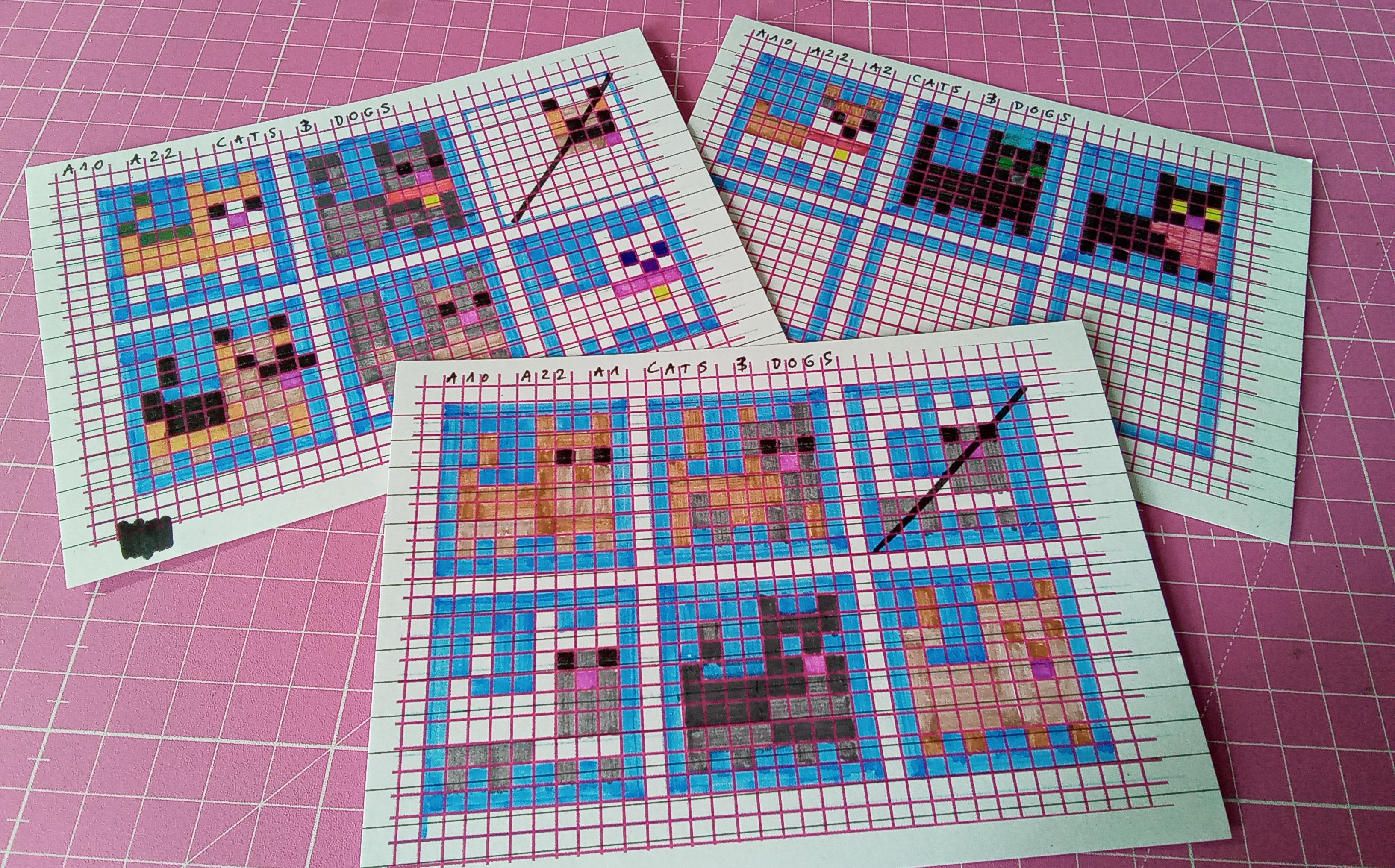
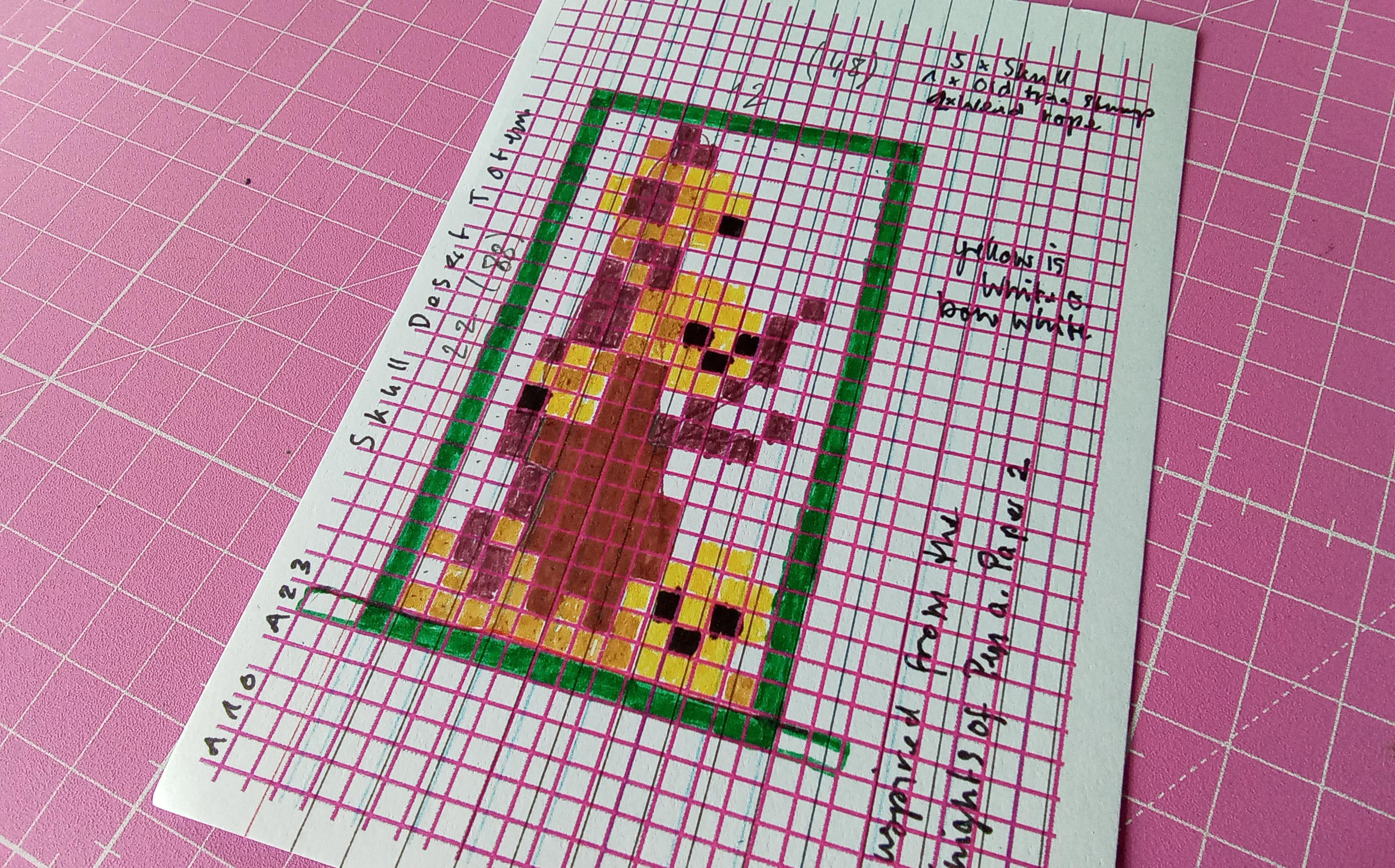

What have we learned?
We learned the first simple techniques of pixel-art and how to transfer preliminary drawings into a pixel-art motif and how abstraction works.
Then we learned a little about the theoretical knowledge of this art form and where pixel-art is used.
Last but not least we learned some important tips. For example, that it's ok not to understand everything right away and that some people need to practice patiently to process information in their brain.
We learned the first simple techniques of pixel-art and how to transfer preliminary drawings into a pixel-art motif and how abstraction works.
Then we learned a little about the theoretical knowledge of this art form and where pixel-art is used.
Last but not least we learned some important tips. For example, that it's ok not to understand everything right away and that some people need to practice patiently to process information in their brain.
What Next?
From this point on there are many paths you can take and I will only show a small fraction here.
So you can draw more pixel-art and join a community to exchange and network with other artists. Or you can learn more about color palettes.
Maybe you want to test your skills and transfer your pixel-art experience into a simple computer game. You may not believe it, but many pixel-artists also work on game design projects.
Maybe you prefer to work alone with your hobby and explore the theory of pixel-art and what other rules there are.
Or you paint a pixel-art motif on paper and hang it up in your apartment. Maybe others will be happy about your art. There are many possibilities and if you have no idea, you can just ask the Internet. There you can then be further inspired.
I hope that I could give you a very simple introduction to pixel-art and that you learned something. I am happy about suggestions and critics in the comments. You can also show me your own motifs, because I would be most pleased. Have fun pixelating wishes you
🤖
Robbi Robot.
*Bip, boop, mip, mup.*
🎨🖌️👾
So you can draw more pixel-art and join a community to exchange and network with other artists. Or you can learn more about color palettes.
Maybe you want to test your skills and transfer your pixel-art experience into a simple computer game. You may not believe it, but many pixel-artists also work on game design projects.
Maybe you prefer to work alone with your hobby and explore the theory of pixel-art and what other rules there are.
Or you paint a pixel-art motif on paper and hang it up in your apartment. Maybe others will be happy about your art. There are many possibilities and if you have no idea, you can just ask the Internet. There you can then be further inspired.
I hope that I could give you a very simple introduction to pixel-art and that you learned something. I am happy about suggestions and critics in the comments. You can also show me your own motifs, because I would be most pleased. Have fun pixelating wishes you
🤖
Robbi Robot.
*Bip, boop, mip, mup.*
🎨🖌️👾